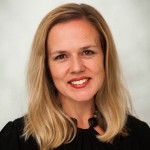Sounds like the start to a bad joke. But I’m serious. What would a school look like if it were to combine some of the most popular online-content providers (such the Khan Academy), with the most developed project-based programs (such as the New Tech Network model)?
I ask this question because I’m enamored with aspects of both programs, but find that they are largely antithetical. Online learning allows students to self-pace and is beginning to be adaptive to students’ individual needs. Many students are zooming ahead academically thanks to engaging and well-designed online programs. But the flipside is that online learning can be isolating and lack the human element. I’ve seen online-learning labs that look like Night of the Living Dead, with pallid, mesmerized students staring solitarily at glowing computer screens.
On the other hand, well-designed project-based learning (PBL) can lead to vibrant, team-based, interactive inquiry. It brings the rich hands-on and face-to-face that in our hearts we all want for our kids. But its drawback is that PBL environments can fall short with delivering raw academic skills. Students with a talent for math, for example, do not have a self-paced opportunity to let that soar. The only fifth grader I know who’s learning Calculus is a Khan Academy kid, not at a PBL school.
A new blended-learning model on the scene might offer an elegant marriage of these contrasting alternatives. Two months ago, Summit Preparatory Charter School in Redwoods, Calif. added two high schools to its collection, and these new schools welcomed their first classes of ninth graders. For math, the students spend half their time doing Khan Academy online lessons and exercises. The other half, the classroom rotates to “complex, team-based challenge projects,” according to Diane Travenner, the CMO’s chief executive officer. The teams are heterogeneous in terms of ability, and the emphasis is on collaboration, analysis, experimentation, and presentation. Often the challenges span multiple days and multiple projects. The schools are competency based; students move to new levels based on mastery, not birthdays.
In our Rise of K-12 Blended Learning report, we identified six models that are beginning to typify the blended-learning landscape. Subsequently we have found several more, which we are exploring and considering with an eye for releasing an updated blended-learning typology later this year. One of the new models that I think merits its own category is Summit’s model, which for now we’re calling the classroom-rotation model. (Acton Academy, which we labeled as a flex model in the report, more accurately fits in this classroom-rotation category.)
In 2009 KnowledgeWorks acquired New Tech Schools. With this acquisition, KnowledgeWorks gained a network of tech-rich, 1:1-computer schools that also have a deep expertise in project-based learning. Sounds like the perfect foundation for a classroom-rotation model. KnowledgeWorks might want to keep its eye on Summit Prep as it considers blended-learning opportunities with New Tech.


